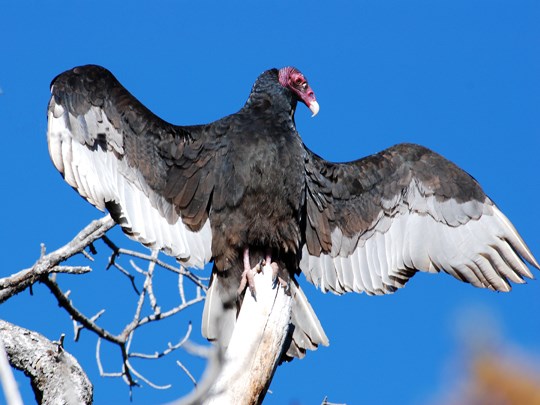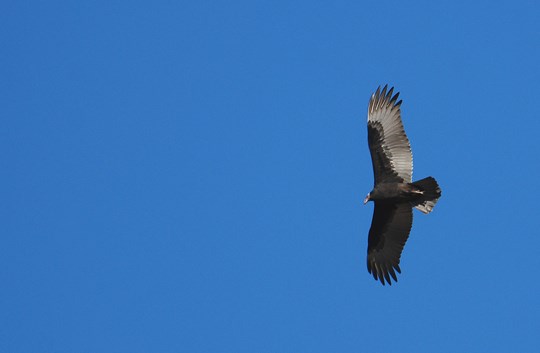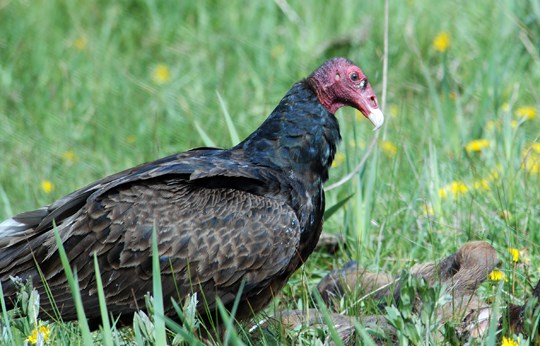
Photo by Sally King Frijoles Canyon has one of the largest turkey vulture roosts in New Mexico. From March through mid-September there are often 50 -60 vultures roosting in the main area of Frijoles Canyon near the visitor center. In the past, even greater numbers used the large cottonwoods located there. In the morning, vultures can be seen sunning themselves on the canyon slopes until the air warms and provides thermal updrafts to begin their days of soaring and feeding. 
Photo by Sally King On the wing, turkey vultures are creatures of grace and beauty. Catching a strong updraft, a turkey vulture can soar for long distances without a single wingbeat. Concentrations of turkey vultures can be found where updrafts allow them to gain elevation with the least effort. On cloudy days, turkey vultures often stay in their roosts. The energy required to gain flight without the aid of thermal updrafts can soon outweigh the beneficial calories gained from food consumption. 
Photo by Sally King Follow Your Nose to Turkey Vulture Food Doing what comes naturally, turkey vultures rid their ecosystems of potentially dangerous decaying organic material. Unlike humans, turkey vultures appear to be totally unaffected by botulism.
Turkey Vulture Comedy As consumers of carrion, grooming is an especially important activity for turkey vultures. Nature has already put them one step ahead with those beautiful, almost naked pink heads. Can you imagine how foul the feathers on your head would get when eating rotten meat? A head adorned with just a small cap of down stays clean much easier. Like all birds, turkey vultures spend a lot of time cleaning and aligning their feathers for more efficient flight. Turkey vultures can rotate their heads incredible distances, allowing them to groom even the feathers on their backs. 
Photos by Sally King Young Turkey Vultures 
Photos by Sally King 
Photo by Sally King |
Last updated: April 28, 2025
